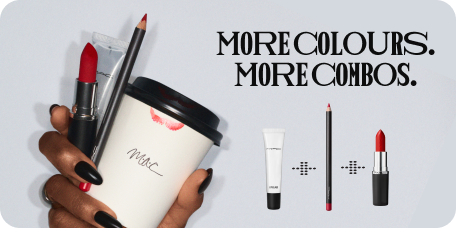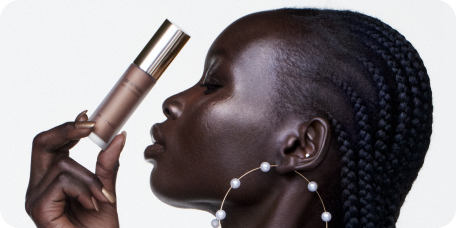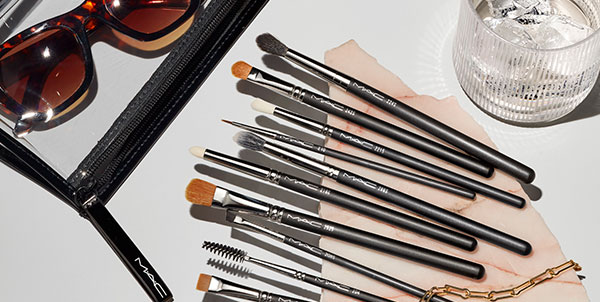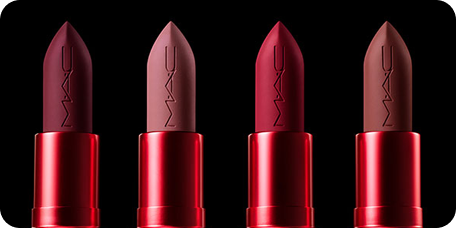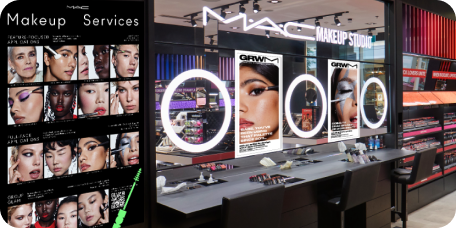OPERA ON ACID
Inside the psychedelic mind of fashion designer Chris Chang
Chris Chang lives, breathes, and possibly eats for breakfast, colour. Poesia, the Chinese fashion designer’s outrageously-hued clothing line, embraces maximalism to the extreme and a kaleidoscopic point-of-view that’s splashed across her garments in ways that are artful, chaotic, frenzied, stunningly beautiful and never without humour. Her penchant for colour borders on the obsessive, although never seeming tacky or ridiculous. Similarly, her M·A·C collection leaves no hue left behind, a brilliant palette inspired by China’s oldest performance art form, Kunqu…on an acid trip. Here, Chris shares her unique and inspiring perspective on a design philosophy that’s all about more.
How would you describe your point of view?
I can’t stand minimalism, I think it’s work undone. In that sense I would best describe my work as “Maximalism.” Over-the-top ethnic tribalism interpreted through the mixture of colours and patterns. Glamorous and dramatic with a happy, girly soul; wearable art that’s childlike yet sophisticated. More is more. It’s never too much if you have the taste and the sense to interpret it with a kind of sensuality unassociated with the word “colourful.”
Your collection was inspired by a concept you call Kunqu Madness. What does that mean?
Kunqu is the oldest form of Chinese performance from the Ming dynasty out of Suzhou. It’s the most refined form of performing art to come from China, and the fact that it’s so refined and requires a lot of discipline for the performers got me to think about what the outcome could be if all went wrong and the refinements were given a psychedelic and wacky turn. I grew up in the US so I didn’t know about Kunqu and its form of art until much later in my life. When I moved to Shanghai in 2006 I got to know Kunqu and it was like a wake-up call finding the roots of how I thought about colour combinations all my life. The exaggerated makeup, costume and styling were in me all along without knowing its art form. It’s colourful and poetic, exactly the spirit behind my work.
Is the collage artwork you created for the packaging hallucinogenic-inspired as well?
It’s natural for me to mix a lot of extremely different elements together to create a collection, juxtaposing extremes. But in the end it all makes sense to me and radiates a kind of sensibility that’s not noisy or riotous. However, my limit is probably very different from most people, so what appears hallucinogenic and crazy may seem trippy to some, but is the best volume level to me.
“I got to know Kunqu and it was like a
wake-up call. It’s colourful and poetic,
exactly the spirit behind my work. “
Where does your fascination with insects come from?
From a very young age. I love how they’re so beautiful in the patterns on their shell and their shape. They’re dramatically unsettling for so many, yet so insignificantly small. I think insects are beautiful, intricate, refined and humorous, yet can be viewed as scary to some. That’s humorous and inexplicable to me.
You’ve been described as Shanghai’s “Queen of Colour.” Why is colour so vital?
I would be happily coined the “Queen of Colour” in all of China. This is how I express my world. It has been natural to me since I was very young. The Chinese had 30-some years where they weren’t exposed to colours or allowed to have them in their wardrobe. Colour was dismissed and neglected. I never swayed. I was advocating this burst of energy before colours and patterns became mainstream.
Poesia started as a children’s couture line, but adults fell in love with it. Why do you think that is?
Because the spirit of my children’s wear WAS about miniature women’s wear. Shrunken and made small but glamorous, artsy and nomadic like my women’s wear.
You say your clothes embody a children’s vision, and that that vision gets lost as we age. How do you keep the child inside you alive?
I don’t think it’s a conscious effort to keep the child in me alive. I think artists are generally more naïve and pure in their own spiritual world. My world is partly and perpetually an eight year-old child full of hopes and dreams with just enough understanding for people and logic but not completely knowing. I think keeping an open mind keeps us young inside. Not being skeptical about new things and stuck in our ways is crucial to keeping a childlike happiness. It’s easier said than done, but I turn into that when I design.











